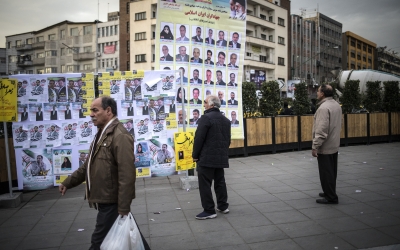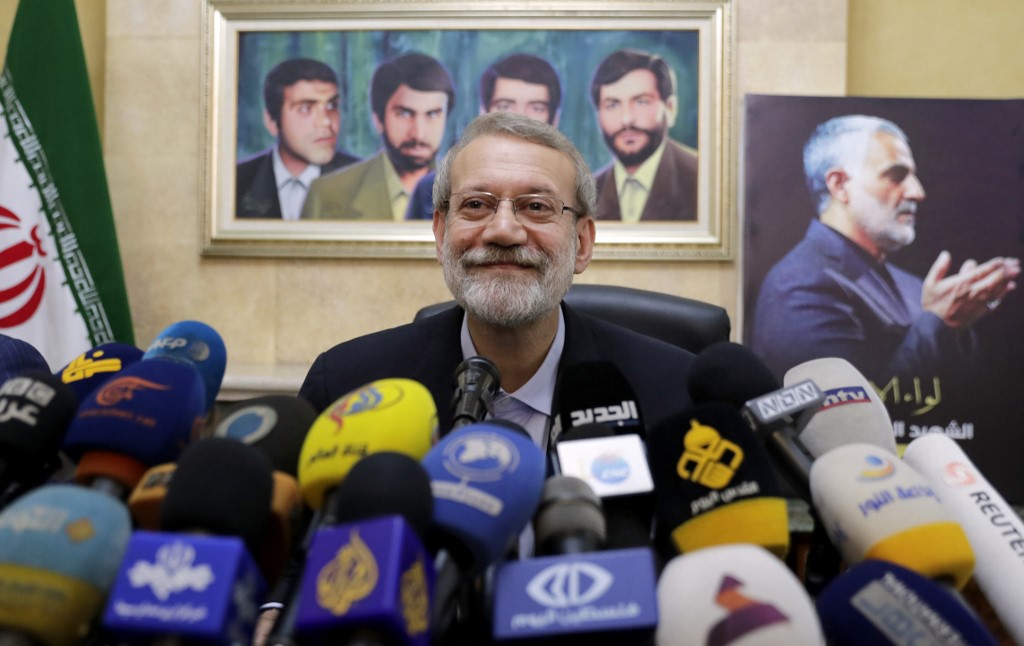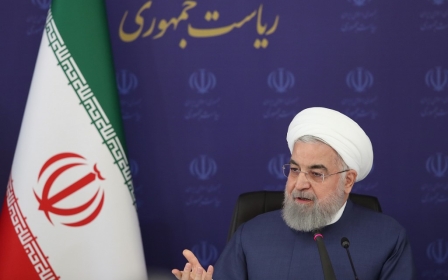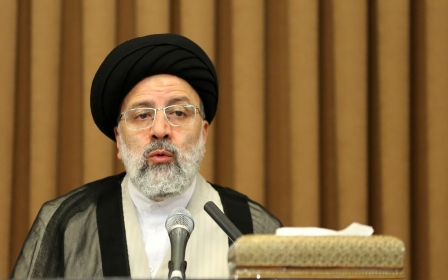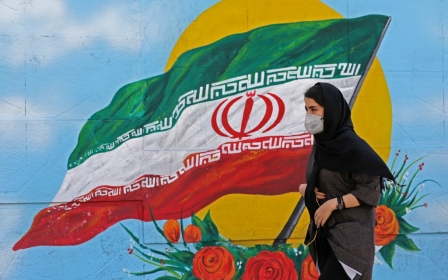Iran presidential election: Reformists face an uphill battle

Iran’s presidential election is set for 18 June 2021.
Yet the debate about likely candidates began in May 2019, when Supreme Leader Ayatollah Ali Khamenei drew the lines showing the direction the next election should take. Addressing a group of university students, he said: “If you, the youth … prepare the ground for the formation of a young and pious government, your griefs will be over, and these griefs are not only yours.”
There are three reasons why Iran’s alliance of reformists and moderates is unlikely to win the 2021 presidential election. One owas addressed by former president Mohammad Khatami, the former president and spiritual leader of the Iranian reform movement, who asked in a speech in March 2019: “Do you think people will listen to us again and participate in the next election?”
Economic disaster
Firstly, the moderate/reformist-backed president, Hassan Rouhani, has almost completely failed to implement the economic and social reforms that he promised, which were central to his election campaigns in 2013 and 2017. Inflation is rampant, unemployment is high, and the national currency, the rial, is in free fall.
New MEE newsletter: Jerusalem Dispatch
Sign up to get the latest insights and analysis on Israel-Palestine, alongside Turkey Unpacked and other MEE newsletters
According to the International Monetary Fund, the inflation rate stands at 34.2 percent and unemployment at 16.3 percent. But there’s a catch: Iran’s methodology in estimating the number of employed people is to count one hour of work per week as employment.
Meanwhile, in 2013, the year Rouhani took office, one US dollar could be exchanged for 30,000 rials. This year, the rial fell to a record low against the US dollar at 300,000 rials.
It is up for debate who or what is to blame for Iran’s battered economy. But it is fair to say that a combination of factors have contributed, including the inefficiency of Rouhani’s administration; the lack of government will to combat social and economic injustices and inequalities; widespread corruption; the theocratic model of government in which the supreme leader is involved in every aspect of life, undermining the administration’s authority; the US sanctions regime; and the Covid-19 pandemic.
In the eyes of voters, however, the alliance of reformists and moderates did not deliver.
Against this background, prominent reformist analyst Sadegh Zibakalam has acknowledged that “people will not vote for reformists anymore”. He added that no matter who the reformists’ candidate is, as a result of Rouhani’s performance, this camp “has no chance” in the next election.
Hardliners consolidating power
Secondly, Rouhani’s brother and adviser was sentenced last year to five years in prison on corruption charges, and Mohammad Ali Najafi, a prominent reformist figure, has been convicted of killing his wife. The two incidents have seriously damaged the credibility of reformists and moderates, who had been perceived as good people by millions of middle-class urbanites who staunchly oppose the conservatives.
Thirdly, a moderate/reformist candidate has a slim chance to become Iran’s next president because the ultra-conservative Guardian Council, which vets prospective candidates, will most likely disqualify their first-ranked candidates, as it did ahead of the February parliamentary elections. The move was partly responsible for seeing the lowest voter turnout since the 1979 revolution.
The recent elections showed that hardliners are putting their consolidation of power ahead of turnout
Although turnout was traditionally viewed as a way for Iran’s system to prove its legitimacy both internally and internationally, the recent elections showed that hardliners are putting their consolidation of power ahead of turnout.
Interestingly, since he became supreme leader, Khamenei has witnessed four presidents take office, none of whom have been aligned with him. Even Mahmoud Ahmadinejad (2005-2013), who in his first term seemed to follow the leader, by his second term got involved in a public rift with Khamenei over a number of issues - to the point that he was disqualified from running in the 2017 election.
Of those four presidents, Akbar Hashemi Rafsanjani and Rouhani, both from the moderate camp, and Mohammad Khatami, the de facto leader of the reform movement, believed that interaction with the US was not only possible, but in the best interests of the nation.
Yet, the hardline faction led by Khamenei on all occasions torpedoed US-Iran rapprochement and labelled those who support direct talks with the US as being either “ignorant” or “traitors”. Against this backdrop, US President Donald Trump quit the Iran nuclear deal in May 2018, providing Khamenei and his supporters with a powerful justification for their radicalism.
Potential reformist candidates
The reformists’ top-ranked options for the 2021 presidential election will include Mohammad Reza Aref, chairman of the pro-reform Hope faction in the last parliament; Eshaq Jahangiri, Rouhani’s current first vice president; Hassan Khomeini, the most prominent grandchild of Ruhollah Khomeini, the leader of Iran’s Islamic Revolution; Ali Motahari, a former deputy parliament speaker and social conservative with reformist political views, who was disqualified in the recent parliamentary elections; Mohammad Reza Khatami, a former deputy parliament speaker and brother of the former reformist president, Mohammad Khatami; and Mostafa Moeen, a high-ranking reformist politician who was formerly a minister and member of parliament.
Although most will likely be rejected by the Guardian Council, the reform camp argues that disqualification of their candidates calls into question the legitimacy of the election, further discrediting their rivals. Foreign Minister Mohammad Javad Zarif is also rumoured to be entering the race, although he has said otherwise.
That said, this camp may support a heavyweight conservative-turned-moderate who has increasingly appeared closer to the moderates, and with whom reformists do not have strained relations: former parliament speaker Ali Larijani.
According to some reports, Larijani has set a condition that he will run only if he is also supported by the conservatives or, as the reports say, the “right traditionalists”. In the absence of Khamenei’s nod, it is unlikely that there would be a consensus among the conservatives (aka Principlists) on Larijani representing them.
Potential conservative candidates
According to a senior conservative principlist, the Principlists have a list of 15 potential candidates, among them five army figures. He maintains that the outcome of the US election will have a significant effect on decisions concerning candidates of this faction. If Trump is re-elected, they will most likely turn towards an army man who is in harmony with them and the supreme leader.
Mohammad Bagher Ghalibaf, former commander of the Revolutionary Guards (IRGC), former Tehran mayor and current parliament speaker, who faces a slew of allegations of financial corruption, is one of the potential candidates of this faction. He is obedient to and enjoys the staunch support of Khamenei. He has already run three times for president.
Other potential candidates from this faction include Saeed Jalili, the ultra-right former secretary of the Supreme National Security Council and Iran’s former nuclear negotiator; Ebrahim Raisi, current chief justice and the potential future leader of Iran after Khamenei, who was defeated by Rouhani in 2017; Mohsen Rezaee, former IRGC commander, current secretary of the Expediency Discernment Council and three-time presidential candidate; Parviz Fattah, former member of the IRGC and current head of the Mostazafan Foundation; Ali Shamkhani, two-star general and current secretary of the Supreme National Security Council; and Mehrdad Bazrpash, a former parliament member and current head of the Supreme Audit Court - a controversial 40-year-old facing allegations of corruption.
Gaining attention
Two army-related figures who attract more attention these days are Hossein Dehghan, 63, a former IRGC air force officer and the former minister of defence; and Saeed Mohammad, commander of Khatam al-Anbiya Construction Headquarters, a massive IRGC-controlled conglomerate.
As the IRGC’s major engineering arm and Iran’s largest contractor in industrial and development projects, Khatam al-Anbiya has implemented and has under contract billions of dollars worth of projects involving dams, water supply systems, agriculture, freeways, petrochemicals and more.
Mohammad, 52, who has successfully led Khatam al-Anbiya, does not wear a military uniform and clearly fulfills Khamenei’s definition of a devoted revolutionary young man to take up the presidency. Some reports maintain that if Trump is elected, people will hear more about Mohammad.
The views expressed in this article belong to the author and do not necessarily reflect the editorial policy of Middle East Eye.
This article is available in French on Middle East Eye French edition.
Middle East Eye delivers independent and unrivalled coverage and analysis of the Middle East, North Africa and beyond. To learn more about republishing this content and the associated fees, please fill out this form. More about MEE can be found here.



